Chicken salan is a classic comfort dish in South Asian homes. It combines tender chicken with a rich, flavorful gravy made from onions, tomatoes, and spices. The recipe is simple yet full of depth, making it a favorite for both everyday meals and family gatherings. Whether served with roti, naan, or rice, chicken salan always feels hearty and satisfying. If you want a dish that is easy to prepare and loved by all, this recipe is the perfect choice.

Introduction to Salan Recipe Chicken
Chicken salan is one of the most loved dishes in South Asian kitchens. The word “salan” simply means curry or gravy, and when paired with chicken, it becomes a comforting meal that suits any occasion. Unlike dry chicken dishes, salan is known for its rich, spiced gravy that soaks perfectly into rice, naan, or roti.
This dish is popular across Pakistan, India, and Bangladesh, with each region giving it its own twist in flavor and spice. Some prefer a thick, creamy gravy while others enjoy a lighter, soupy version. No matter the style, the combination of chicken, slow-cooked onions, tomatoes, and warm spices creates a dish that feels both homely and festive.
The beauty of chicken salan is in its simplicity. With a handful of everyday ingredients, you can prepare a dish that tastes special without needing fancy techniques. Its versatility makes it perfect for family dinners, weekend gatherings, or even special events.

Essential Ingredients You’ll Need
To make a flavorful chicken salan, you don’t need anything complicated. Most of the ingredients are already part of a typical South Asian pantry. Here’s what you’ll need:
Chicken
Fresh chicken is the star of this recipe. You can use either whole chicken cut into medium pieces or specific parts like drumsticks and thighs for extra juiciness. Boneless chicken also works but on-the-bone pieces add more flavor to the gravy.
Onions
Onions form the base of the curry. They are sautéed until golden brown to give depth and sweetness to the salan. Finely sliced onions are preferred as they blend smoothly into the gravy.
Tomatoes
Tomatoes bring tanginess and body to the curry. Fresh ripe tomatoes are ideal, but tomato puree or paste can be used when fresh ones are not available.
Cooking Oil or Ghee
Traditionally, ghee was used for cooking salan, giving it a rich aroma. These days, most people use cooking oil or a mix of both. The choice depends on your taste preference.
Spices
The heart of chicken salan lies in its spices. Common ones include:
- Cumin seeds
- Coriander powder
- Red chili powder
- Turmeric
- Garam masala
- Black pepper
- Whole spices like bay leaf, cloves, and cinnamon for aroma
These spices work together to create a warm and flavorful gravy.
Ginger and Garlic
Fresh ginger and garlic paste is essential for the authentic taste. They cut through the richness of the curry and add freshness.
Fresh Herbs
Green chilies, coriander leaves, and sometimes mint are used at the end for garnish. They lift the flavor and give the dish a fresh finish.
Water or Stock
To adjust the gravy’s thickness, water or chicken stock is added. Stock makes the salan richer, but water works just fine too.
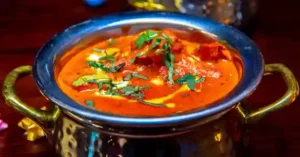
Essential Ingredients You’ll Need
The magic of chicken salan lies in using everyday ingredients that blend together into a rich, flavorful curry. Each element has its role, and when combined, they create the comforting taste that makes this dish so popular. Here are the essentials:
Chicken
Chicken is, of course, the hero of this recipe. Bone-in pieces are preferred because they release natural juices that enrich the gravy. Drumsticks, thighs, or a whole chicken cut into medium-sized pieces all work well. If you prefer a lighter version, you can also use boneless chicken, though the flavor will be slightly different.
Onions
Onions are the backbone of most South Asian curries, and chicken salan is no exception. Finely sliced onions are cooked until golden brown to form the base of the masala. They provide natural sweetness and a deep, earthy flavor to the gravy.
Tomatoes
Tomatoes balance the sweetness of onions with their tanginess. They also help thicken the gravy and add a beautiful red color. Fresh tomatoes are best, but canned tomatoes or tomato puree can be used if needed.
Ginger and Garlic
Fresh ginger and garlic paste is essential for a bold, aromatic base. They cut through the richness of the curry and add layers of flavor that make the salan taste fresh and vibrant.
Cooking Oil or Ghee
Traditionally, ghee was used to prepare salan, giving it a rich, nutty aroma. Nowadays, many people prefer cooking oil for a lighter taste. A mix of the two is often the perfect balance.
Spices
No chicken salan is complete without spices. These create the warmth and depth that define the dish. The essentials include:
- Cumin seeds for a nutty flavor.
- Coriander powder for earthy notes.
- Red chili powder for heat.
- Turmeric for color and subtle flavor.
- Garam masala for aroma and a finishing touch.
- Whole spices like bay leaf, cardamom, cloves, and cinnamon for richness.
Fresh Herbs and Chilies
Green chilies add heat and freshness, while fresh coriander leaves give the curry a burst of color and aroma. A sprinkle of chopped herbs at the end makes the dish look and taste complete.
Water or Stock
To bring the gravy to the right consistency, you’ll need water or chicken stock. Stock gives the dish a deeper, savory flavor, while water keeps it light and homestyle.
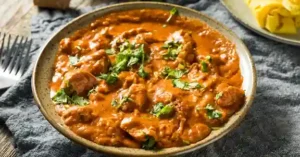
Choosing the Right Chicken and Spices
The flavor of chicken salan depends greatly on the quality of chicken and the way spices are used. Picking the right ingredients and balancing them well can turn a simple curry into something unforgettable.
Selecting the Chicken
- Bone-in vs. Boneless: Bone-in chicken is the traditional choice. As it cooks, the bones release natural juices that enrich the gravy and add depth of flavor. Boneless chicken cooks faster and is easier to eat, but it won’t give the same richness.
- Freshness Matters: Always choose fresh chicken with a firm texture and no strong odor. Fresh meat absorbs spices better and cooks evenly.
- Cut Size: Medium-sized pieces work best for salan. Smaller cuts may overcook and dry out, while very large pieces take too long to absorb flavors.
Balancing the Spices
Spices are the soul of chicken salan. Using the right mix and amount makes the difference between a bland curry and a flavorful one.
- Base Spices: Cumin, coriander powder, turmeric, and red chili powder form the foundation. These should be measured carefully—too much chili can overpower, while too much turmeric can make the dish bitter.
- Whole Spices: Bay leaf, cloves, cinnamon, and cardamom add aroma. They should be sautéed in hot oil at the start so the flavors infuse into the gravy.
- Finishing Touches: Garam masala is best added towards the end of cooking. It enhances the aroma and gives the curry its final flavor lift.
- Fresh Additions: Green chilies and fresh coriander leaves bring brightness and freshness. They prevent the dish from feeling too heavy.
Spice Level Adjustments
Not everyone enjoys very spicy food. The beauty of chicken salan is that you can easily adjust the heat:
- For a mild version, reduce red chili powder and add a little more tomato.
- For a spicier kick, increase green chilies or add crushed black pepper.
- For a balanced taste, use both green chilies and red chili powder in moderation.
Oil and Cooking Medium
The choice of oil or ghee also changes the flavor. Ghee gives a richer, festive taste, while oil keeps it lighter and everyday-friendly. For special occasions, many people use a mix of the two.
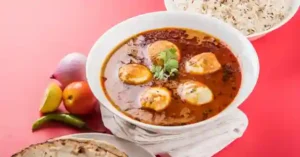
Step-by-Step Cooking Method
Making chicken salan is simple when you follow the process step by step. Each stage builds flavor and ensures the curry turns out rich and satisfying.
Prepare the Base
Heat oil or ghee in a deep cooking pot. Add whole spices like bay leaf, cloves, cinnamon, and cardamom. Let them sizzle for a few seconds to release aroma. Add finely sliced onions and sauté until golden brown. This stage is important because well-browned onions give depth and sweetness to the curry.
Add Ginger and Garlic
Stir in fresh ginger-garlic paste. Cook for 1–2 minutes until the raw smell disappears. This forms the aromatic foundation of the salan.
Cook the Tomatoes and Spices
Add chopped or pureed tomatoes. Cook until they soften and blend into the onions. Mix in powdered spices: coriander powder, red chili powder, turmeric, and salt. Stir well and let the masala cook until the oil starts separating. This step ensures the raw taste of spices is gone.
Add the Chicken
Add chicken pieces to the masala. Stir on medium-high heat for 5–7 minutes so the chicken is coated with spices and starts to seal. This process locks in flavor and prevents the meat from tasting bland.
Simmer the Gravy
Pour in water or chicken stock, depending on the consistency you prefer. For a lighter curry, use more water; for a thicker version, use less. Cover the pot and let the chicken cook on low to medium heat for 20–25 minutes, or until tender. Stir occasionally to prevent sticking.
Finish with Aroma
Once the chicken is fully cooked and the gravy has reached the desired thickness, sprinkle in garam masala. Add fresh green chilies and chopped coriander leaves. Simmer for another 2–3 minutes to let the flavors blend.
Rest and Serve
Turn off the heat and let the salan rest for a few minutes before serving. This allows the spices to settle and the gravy to thicken slightly. Serve hot with naan, roti, or rice.
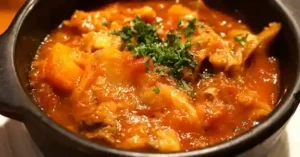
Tips for Perfecting the Gravy
The gravy, or “salan”, is the heart of this dish. A well-cooked gravy turns simple chicken into a flavorful curry that everyone loves. Here are some tips to make your salan rich, balanced, and just the right consistency.
Browning the Onions Properly
Onions are the base of the gravy. Make sure to cook them until they turn golden brown, not burnt. If they’re too light, the gravy will taste flat; if they burn, it will turn bitter. Take your time here — this step sets the flavor foundation.
Cooking the Masala Thoroughly
When you add tomatoes and powdered spices, cook until the oil separates from the mixture. This shows the masala is fully cooked. If you rush this step, the gravy may taste raw and lack depth.
Balancing Spice and Heat
Not everyone enjoys overly spicy food. Taste the gravy as it cooks and adjust chili powder or green chilies accordingly. If it becomes too spicy, add a little yogurt, cream, or extra tomato to mellow the heat.
Controlling the Consistency
For a thicker gravy, use less water and cook uncovered for longer so excess moisture evaporates. For a lighter, soupy version, add more water or stock and let it simmer gently. Stir regularly to prevent the gravy from sticking or burning at the bottom.
Using Fresh Herbs at the End
Always add fresh coriander leaves and green chilies at the end of cooking. This keeps their aroma intact and brightens the dish. Adding them too early will dull their freshness.
Resting the Curry Before Serving
Once cooked, let the chicken salan rest for 5–10 minutes before serving. This allows the flavors to settle and the gravy to thicken naturally, making it taste even better.
Enhancing Flavor (Optional)
For extra richness, you can:
Add a spoonful of yogurt for creaminess. Use a mix of oil and ghee instead of just one. Sprinkle roasted cumin powder on top for a smoky kick.
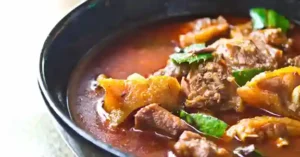
Variations of Chicken Salan
One of the best things about chicken salan is its versatility. While the base recipe remains the same — chicken simmered in a spiced gravy — every region and household adds its own twist. These variations give the dish new flavors while keeping its comforting essence.
Punjabi-Style Chicken Salan
Punjabi versions are bold and hearty. The gravy is usually thicker, with extra onions, tomatoes, and plenty of ghee. It often includes whole spices like black cardamom and cloves for a deep, warming flavor. This style pairs perfectly with naan or tandoori roti.
Hyderabadi Chicken Salan
Known for its rich and complex flavors, Hyderabadi chicken salan often includes coconut, peanuts, or sesame seeds ground into the gravy. This gives the dish a nutty taste and a creamy texture. It’s commonly served with biryani or plain steamed rice.
Sindhi Chicken Salan
Sindhi-style salan is spicier and more robust. It uses more red chili powder and whole green chilies, creating a fiery curry that’s balanced with tangy tomatoes. The gravy is slightly thinner, making it ideal with steamed rice.
Pakistani Homestyle Chicken Salan
In many Pakistani homes, chicken salan is cooked with simple ingredients — onions, tomatoes, basic spices, and a touch of yogurt. It’s light, aromatic, and perfect for daily meals with chapati or rice.
North Indian Chicken Salan
This variation leans towards a creamier finish. Sometimes yogurt, cream, or cashew paste is added to soften the heat and give the gravy a silky texture. It’s popular at festive meals and pairs beautifully with naan.
Healthier or Modern Twists
For a lighter version, you can:
- Use less oil and skip ghee.
- Replace cream with low-fat yogurt.
- Add vegetables like spinach or peas for extra nutrition.
For a quicker version, pressure cook the chicken with the masala to save time without losing flavor.
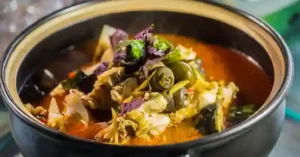
Serving Suggestions
Chicken salan is a versatile dish that pairs beautifully with many South Asian staples. The way you serve it can completely change the dining experience, whether it’s a simple family dinner or a festive gathering.
With Naan or Roti
Soft naan or freshly made roti is the most traditional pairing. The bread soaks up the flavorful gravy, making every bite satisfying. Garlic naan or tandoori roti adds an extra layer of aroma.
With Steamed Rice
Plain steamed rice is a classic choice. The lightness of rice balances the richness of the salan. For a more aromatic option, you can serve it with basmati rice.
With Jeera Rice or Pulao
If you want something more flavorful than plain rice, jeera (cumin) rice or a light pulao works wonderfully. Their subtle spices complement the salan without overpowering it.
With Parathas
For a richer meal, serve chicken salan with crispy parathas. The layers of paratha absorb the gravy well, making the meal hearty and indulgent.
Garnishing Ideas
Sprinkle freshly chopped coriander leaves on top for color and freshness. Add a few sliced green chilies if you prefer a spicier touch. A squeeze of lemon juice just before serving enhances the flavors and cuts through the richness.
Accompaniments
To complete the meal, you can serve chicken salan with:
- Salad: Simple onion, cucumber, and tomato salad with a pinch of salt and lemon.
- Raita: Yogurt mixed with cucumber, mint, or boondi helps cool the palate.
- Pickles and Papad: Traditional sides that add crunch and tang to the meal.
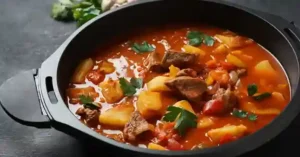
Storage and Reheating
Chicken salan tastes delicious fresh, but it also keeps well for later meals. With the right storage and reheating methods, you can enjoy the same flavor and freshness even after a day or two.
Cooling Before Storage
Always allow the chicken salan to cool down to room temperature before storing. Putting hot food directly in the fridge creates condensation, which can make the gravy watery and spoil faster.
Storing in the Refrigerator
Transfer the salan into an airtight container. Store in the refrigerator for up to 2–3 days. If you’ve added dairy like yogurt or cream, consume it within 2 days for best taste and safety.
Freezing for Longer Storage
If you want to store it for longer:
Freeze the salan in portion-sized containers. It stays good for up to 2 months in the freezer. For best results, freeze without garnishes like coriander leaves, and add them fresh after reheating.
Reheating on the Stove
Transfer the salan to a pot. Warm it over medium heat, stirring occasionally to prevent sticking. Add a splash of water or stock if the gravy has thickened too much. Garnish again with fresh coriander and green chilies before serving.
Reheating in the Microwave
Place the desired portion in a microwave-safe bowl. Cover loosely with a lid to avoid splattering. Heat in short intervals, stirring in between, until evenly warmed. Check that the chicken pieces are hot all the way through.
Things to Avoid
Do not reheat the same portion multiple times — take out only what you plan to eat. Avoid storing chicken salan at room temperature for long periods, as it spoils quickly. Never refreeze thawed chicken salan.
Conclusion
In the end, chicken salan is a timeless dish that captures the heart of South Asian cooking — simple ingredients, bold spices, and a comforting gravy that never fails to satisfy. Whether you enjoy it with naan, rice, or parathas, this recipe brings warmth to everyday meals and joy to special occasions. With a little care in choosing ingredients and balancing spices, you can create a chicken salan that’s both authentic and unforgettable.
FAQS
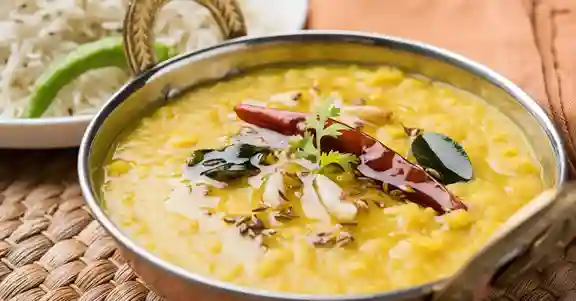
Salan Recipe Chicken
Ingredients
Method
- Heat the oil in a deep pot
- Add in the diced onions. Cook these on a medium high heat till the onions become translucent and begin to brown lightly on the edges,
- Add the halved tomatoes and a splash of water. Cover and steam this on low for about 5 minutes, lid on. Once the 5 minutes are up, the skin should slip off the tomatoes easily. Remove and discard.
- Turn the heat up, add the garlic, ginger and all the spices and dry out the masala, stirring constantly. Use your spoon to mash the onions and tomatoes as you stir. Alternatively, you can blend these to get a super smooth masala fast.
- Once the masala is super dry, the oil begins to separate at the edges and the masala begins to catch at the bottom of the pot, add the chicken.
- Sauté the chicken on high heat, again stirring constantly, until the chicken changes colour and no longer remains pink.
- Add 2.5 cups of water. Bring to a boil, then cover and simmer on low for half an hour.
- Once the chicken is cooked through, stir in the garam masala and coriander/dried fenugreek.
